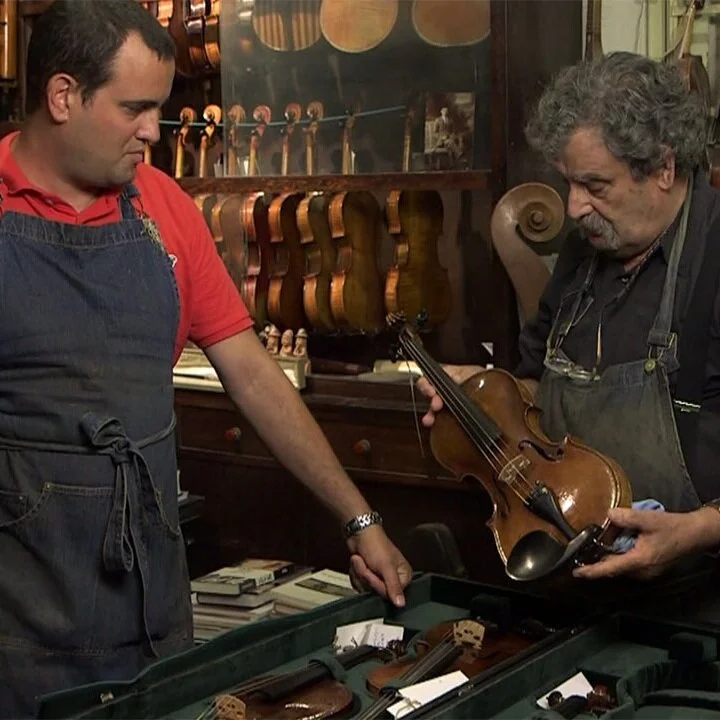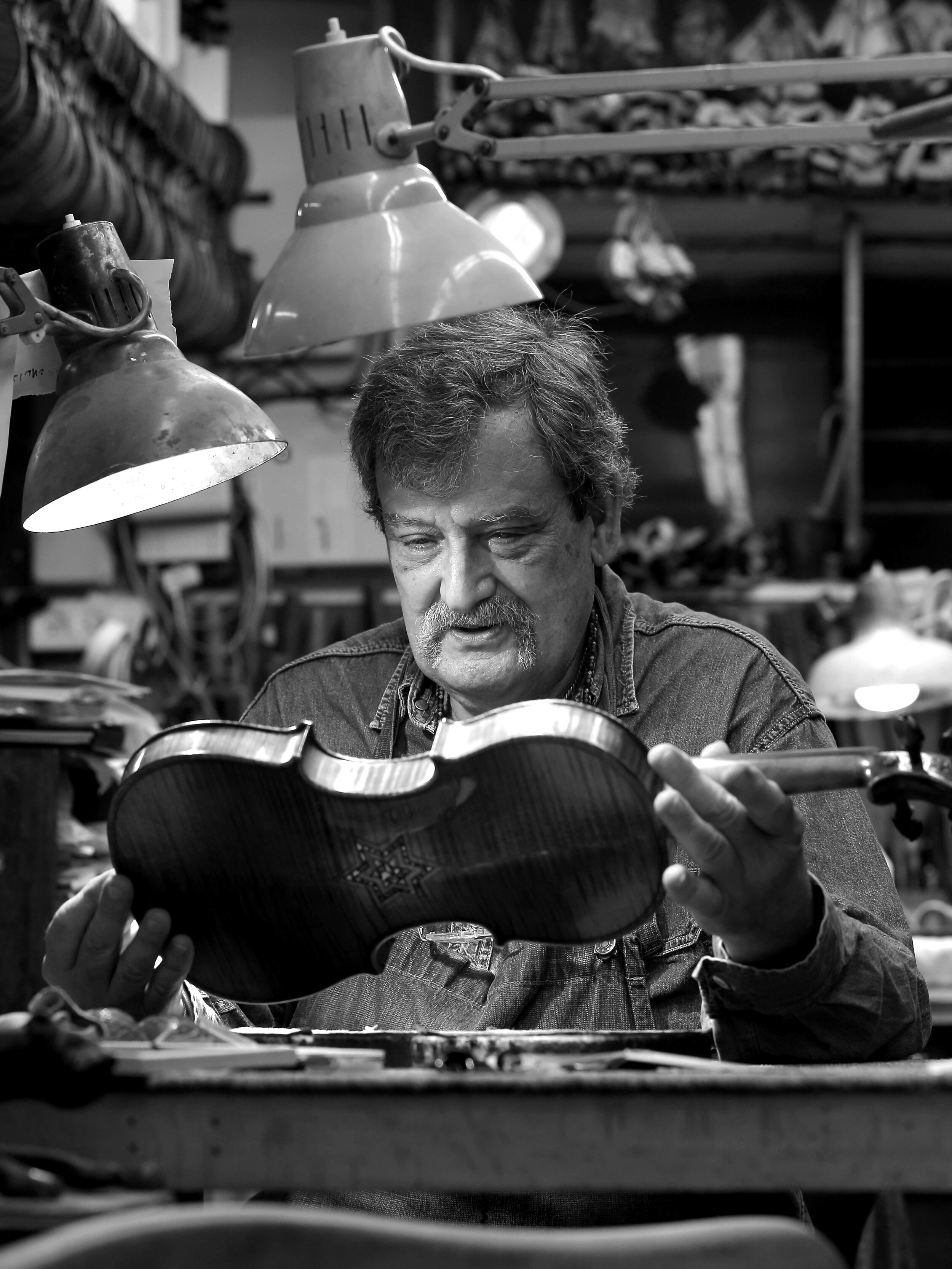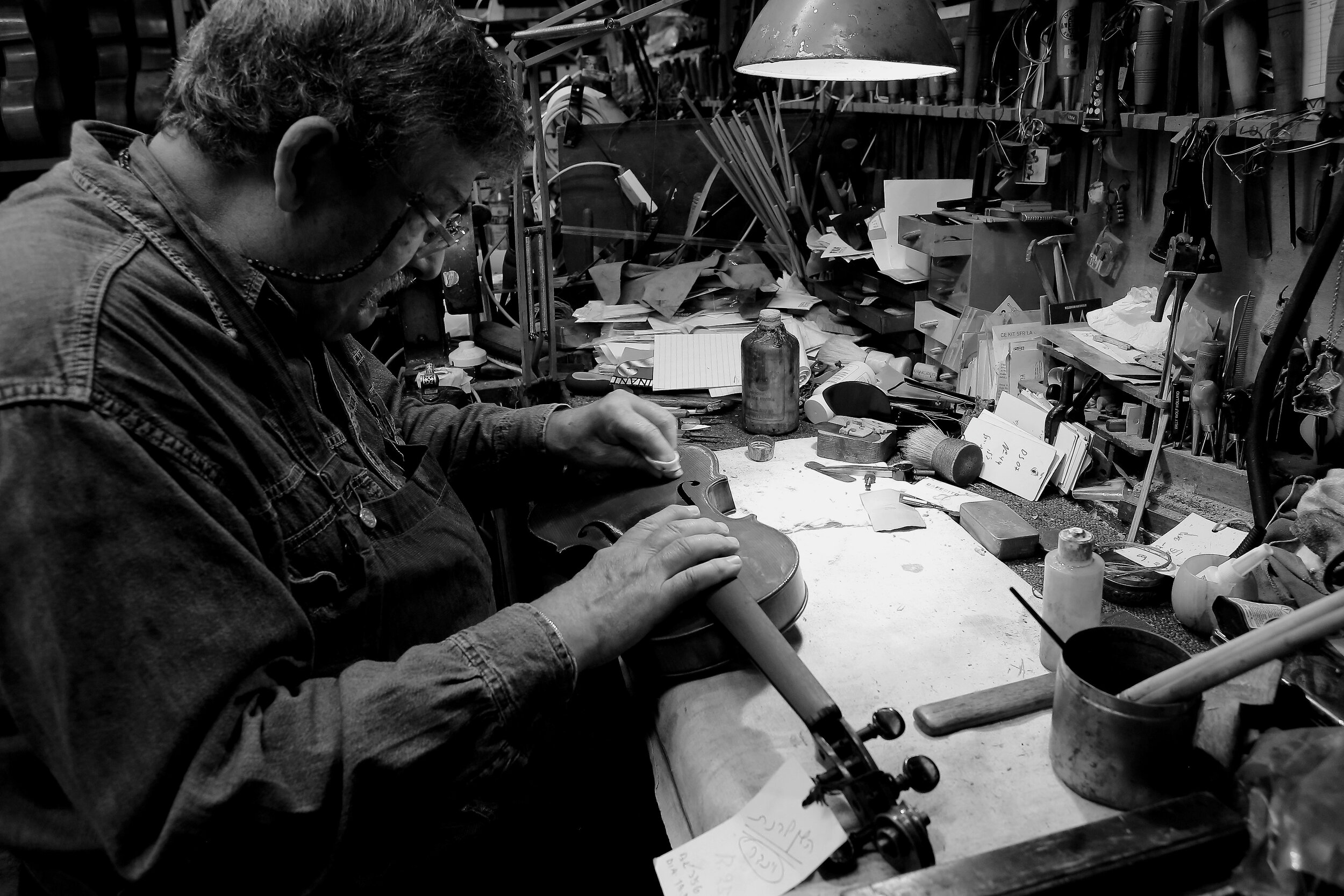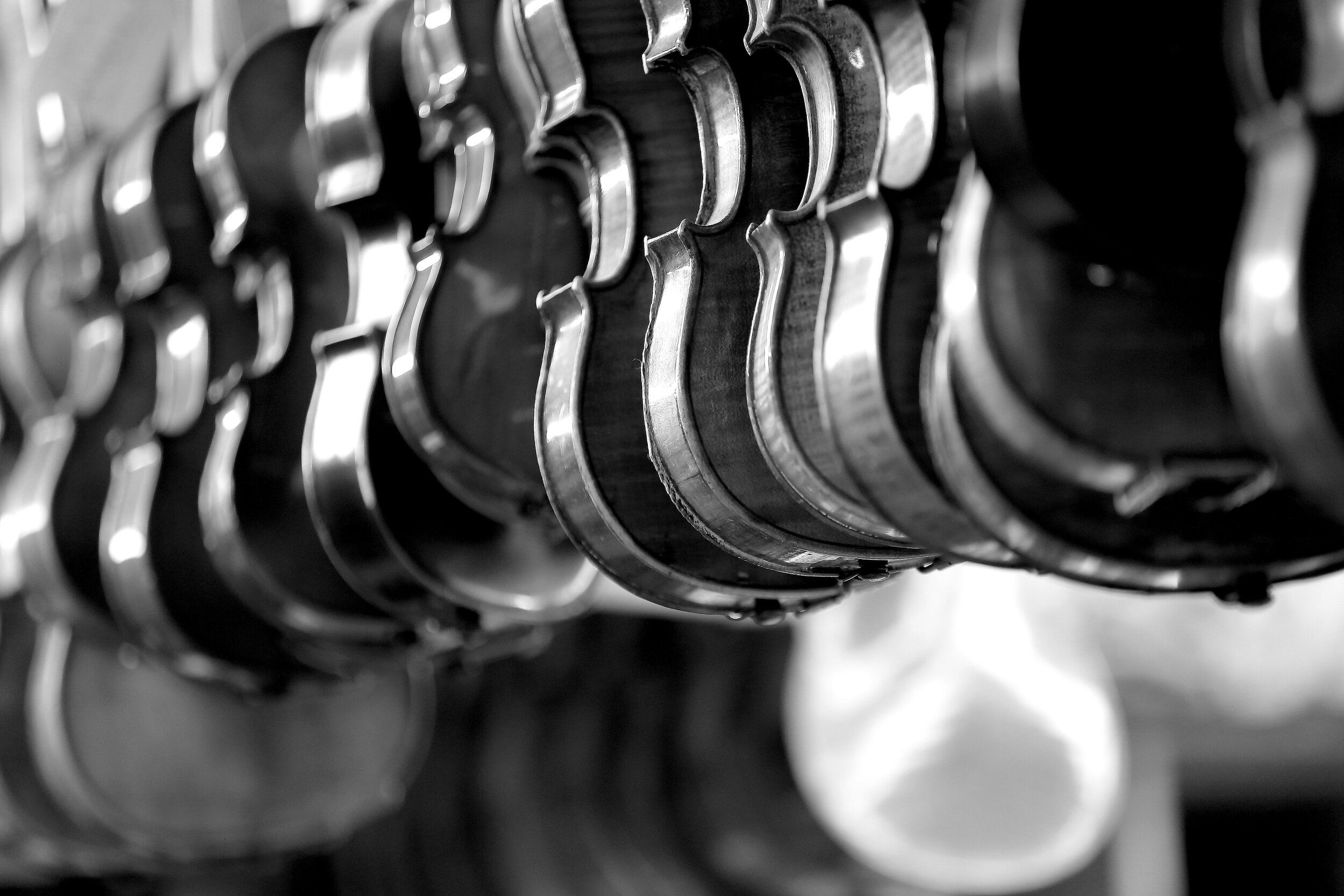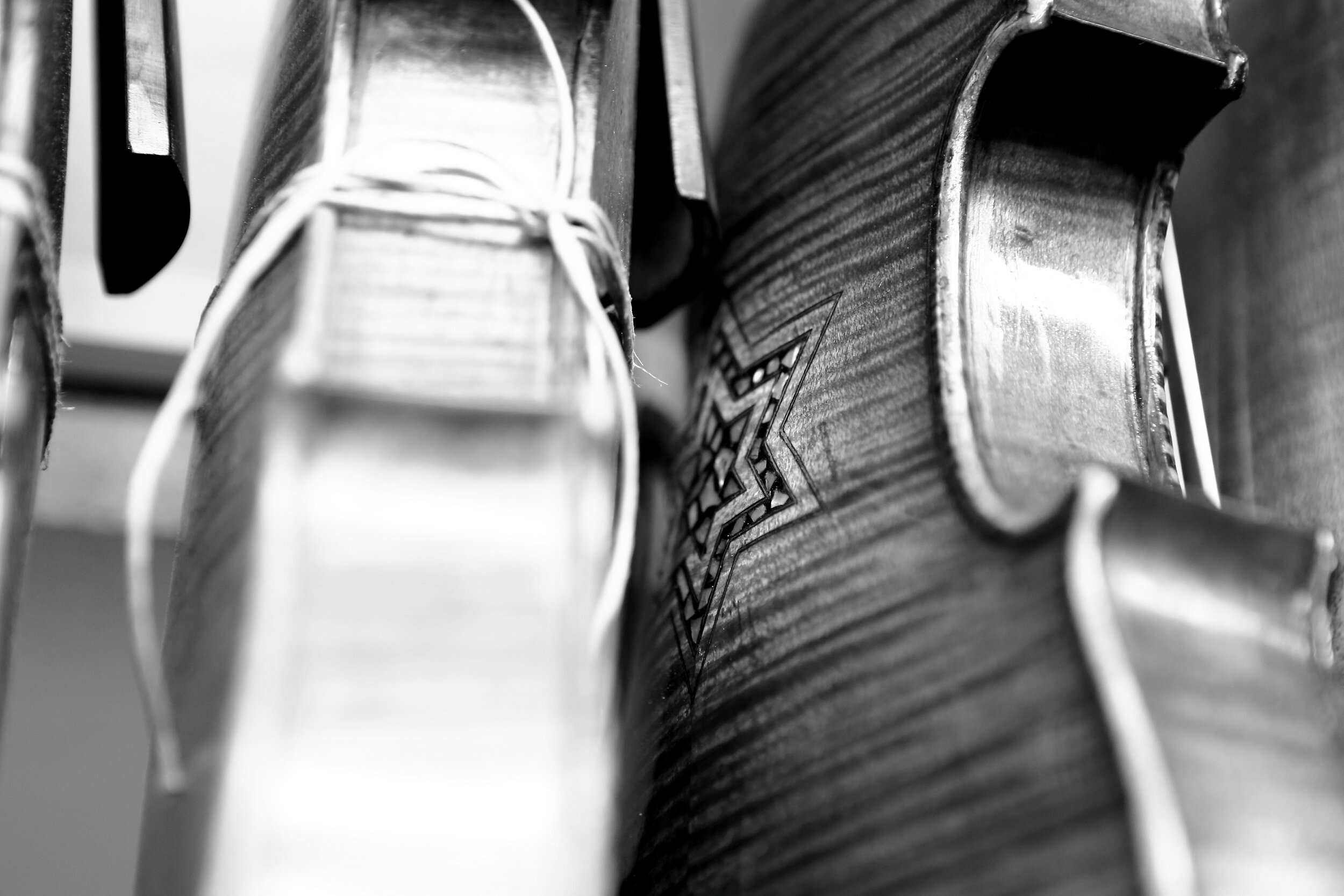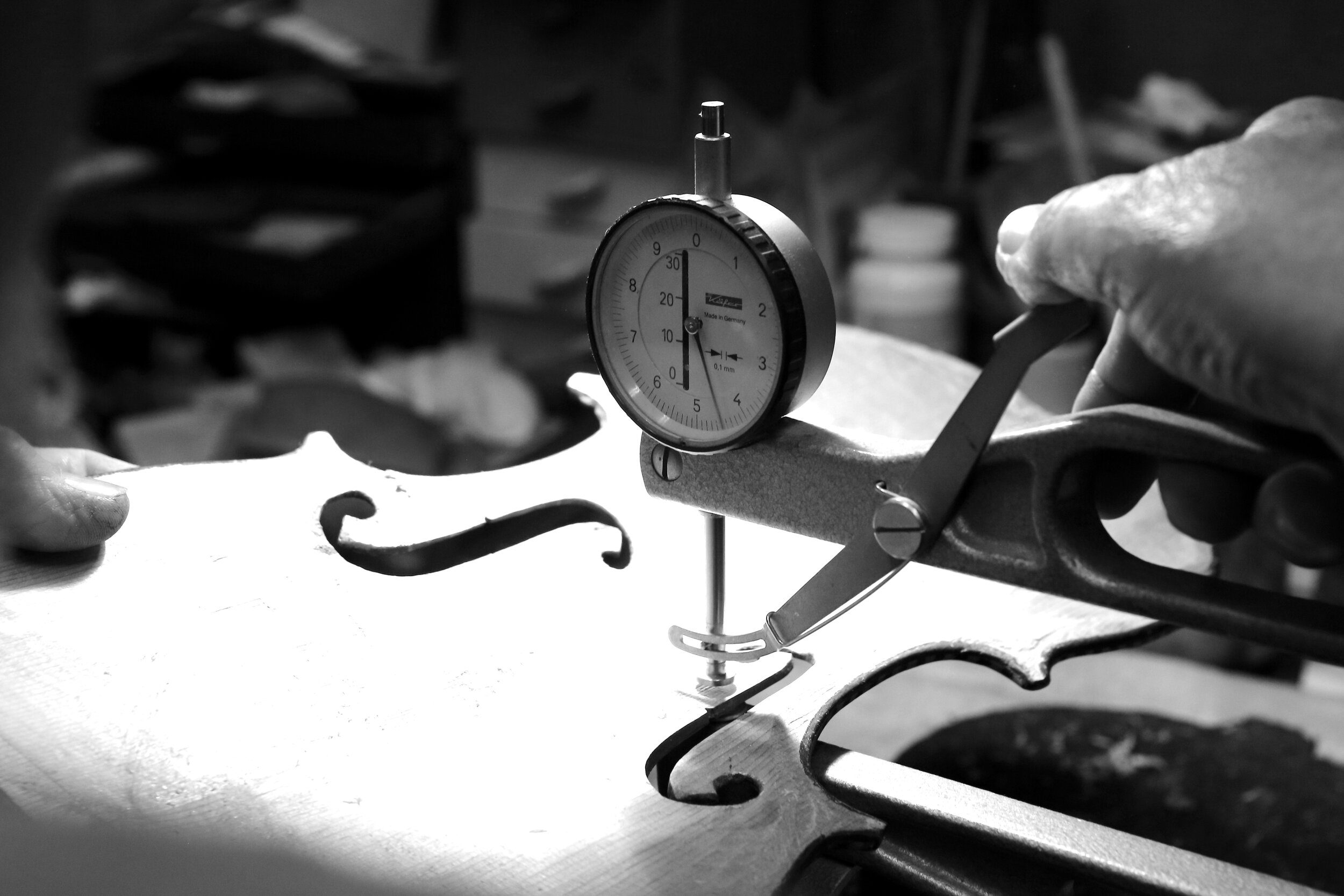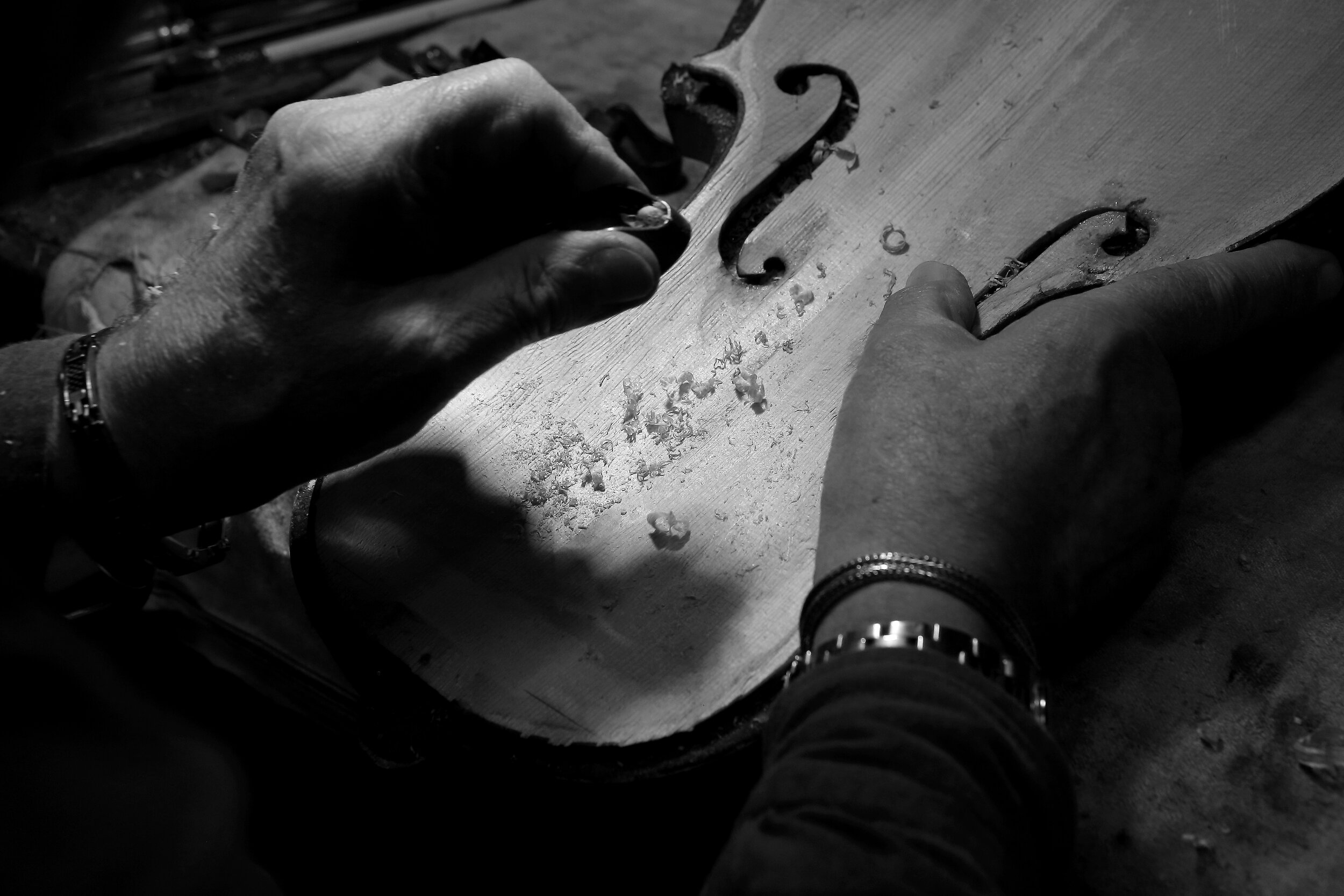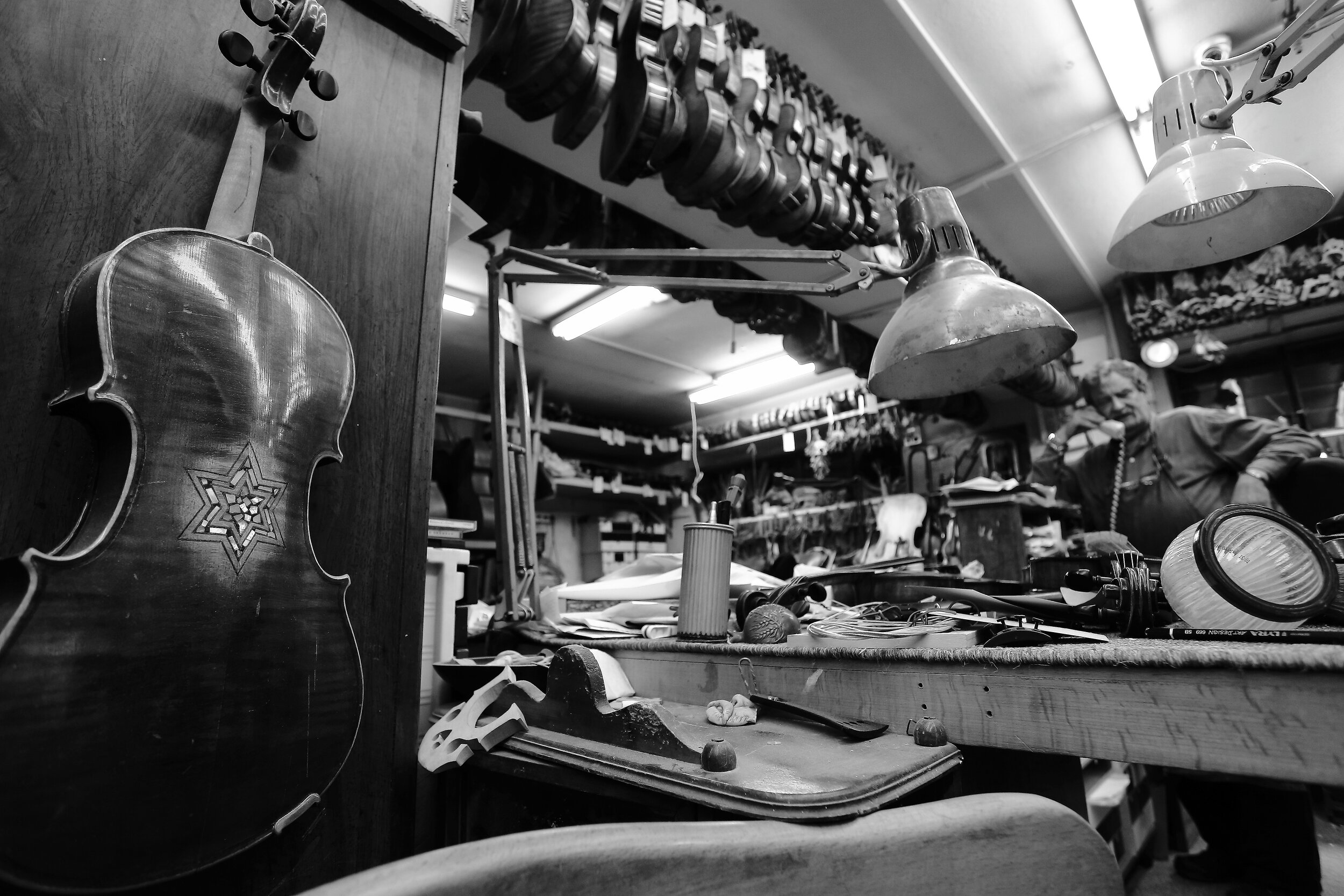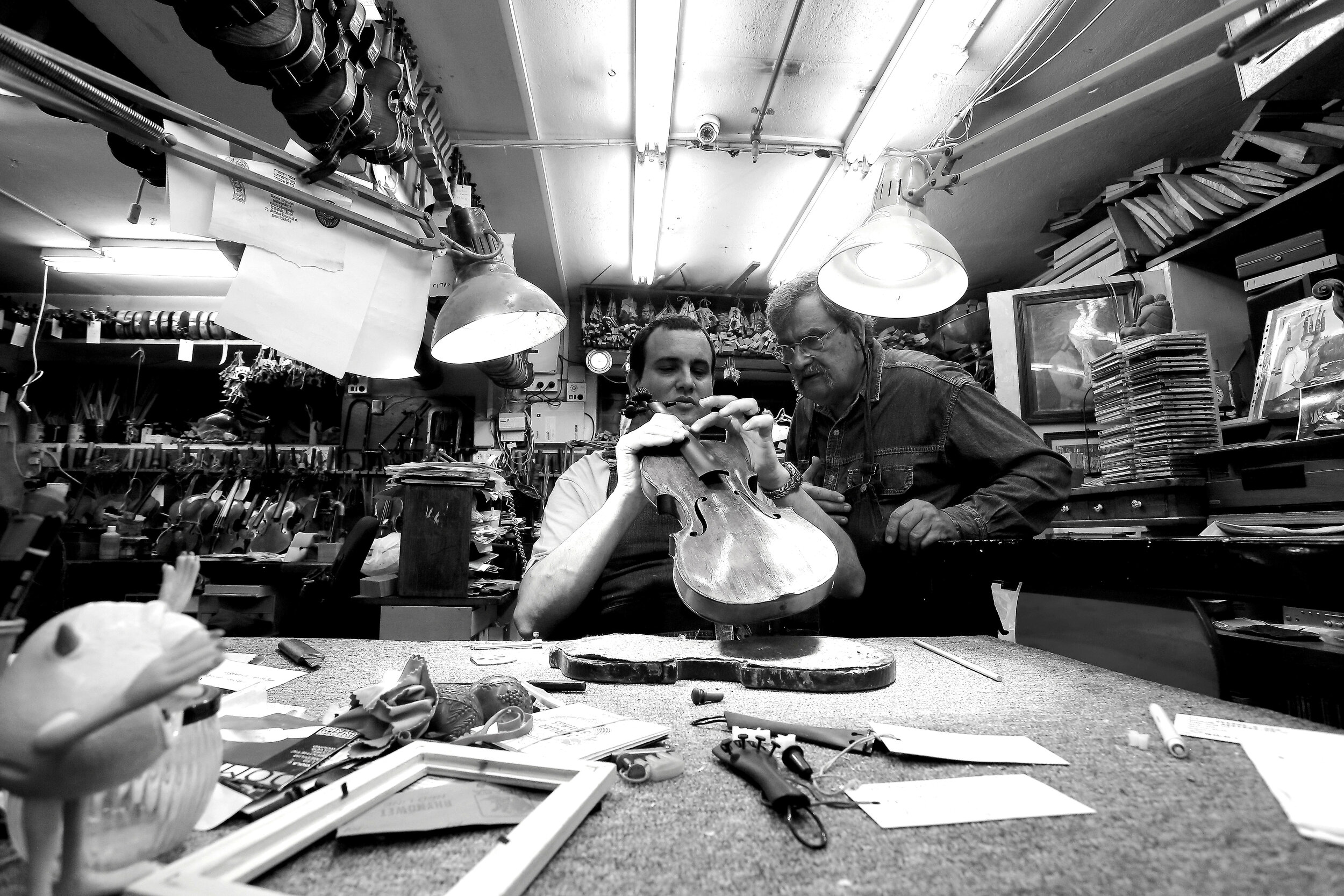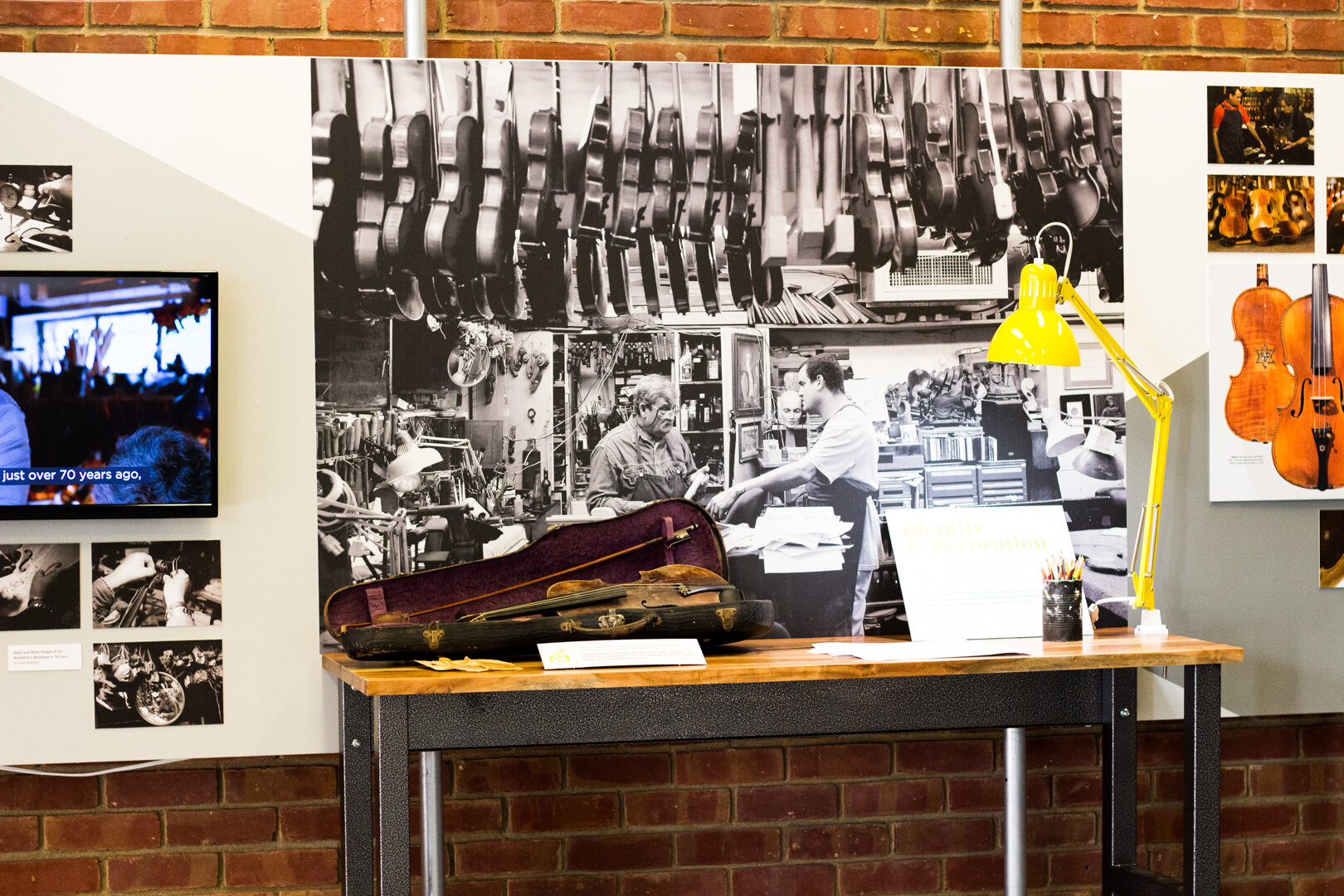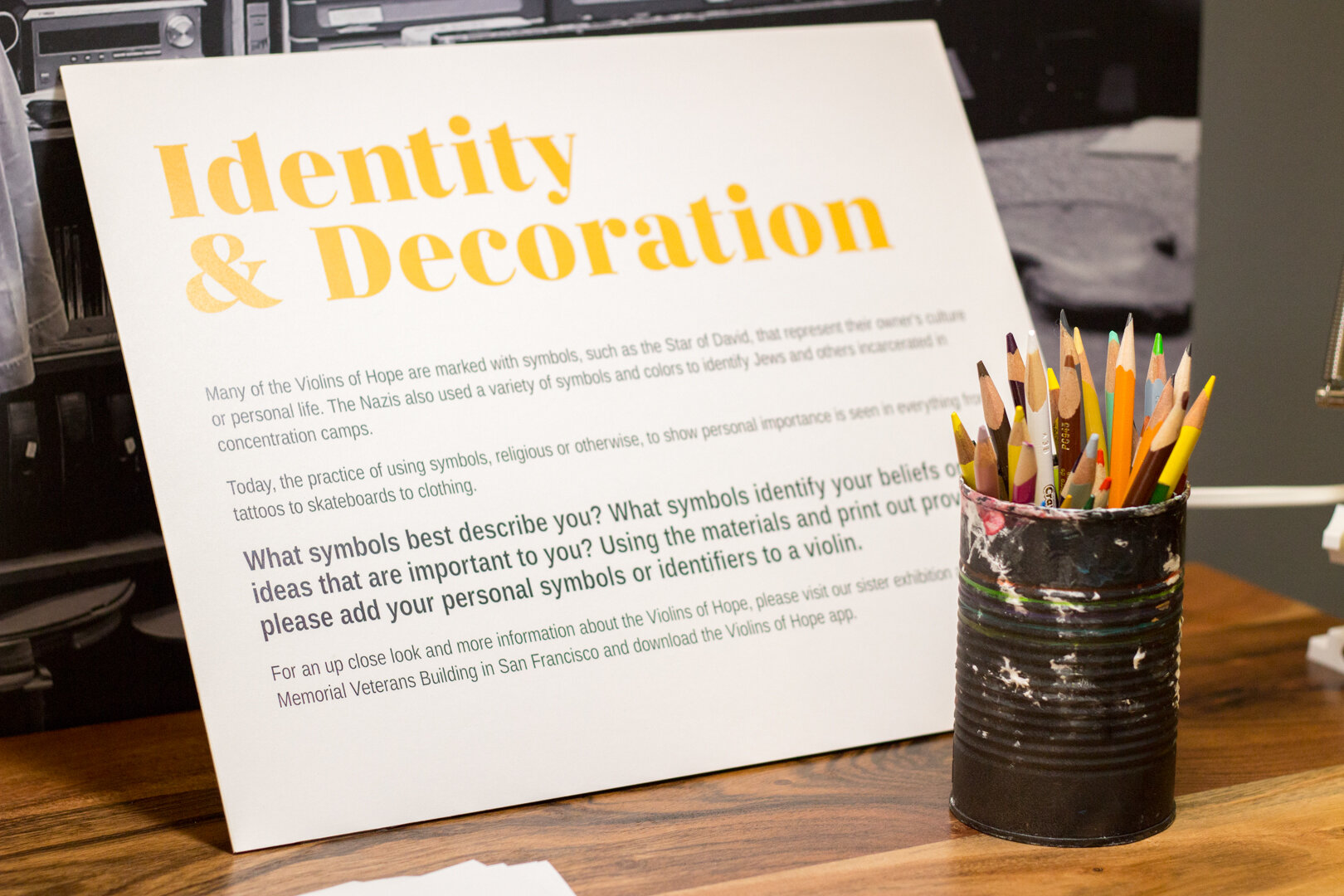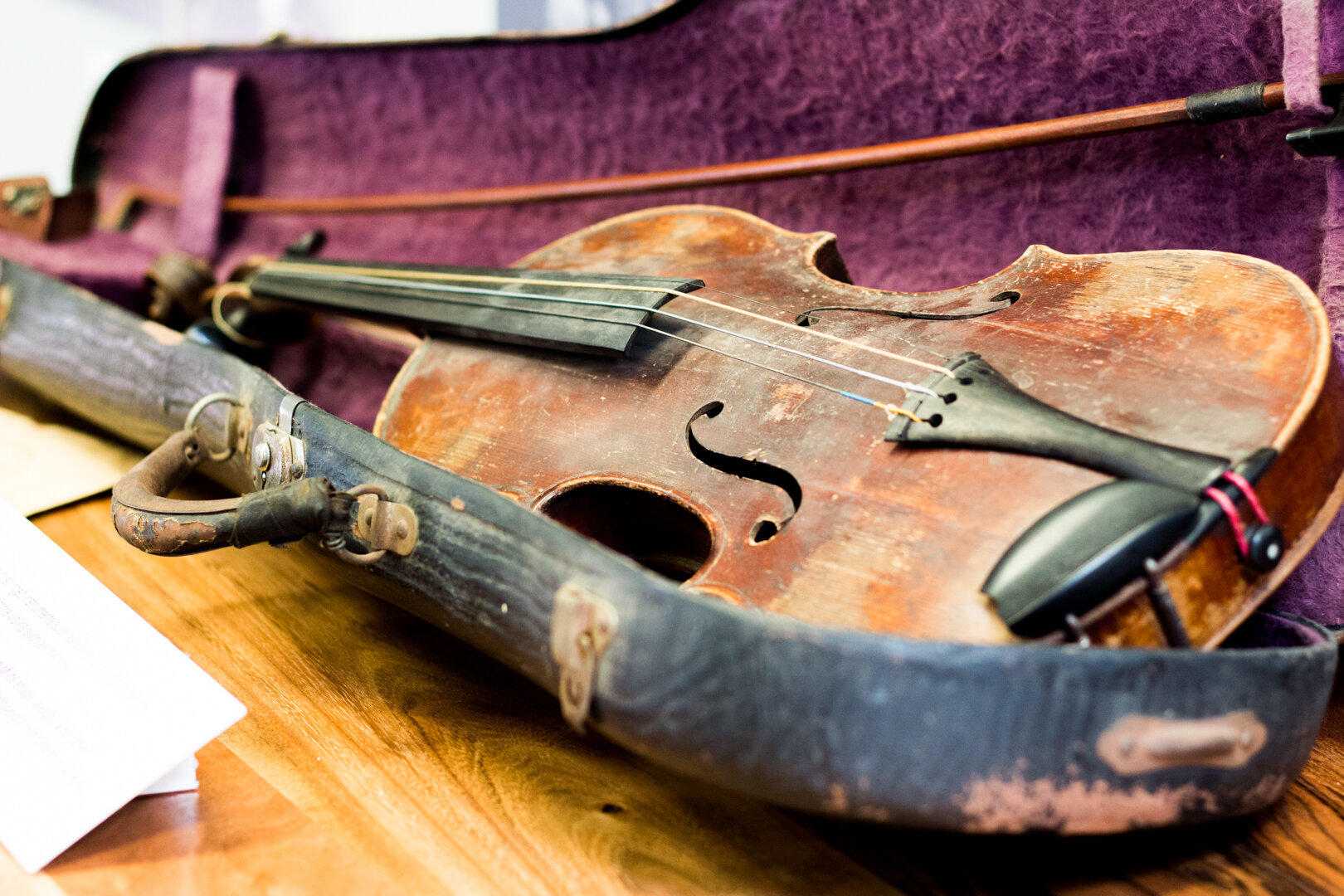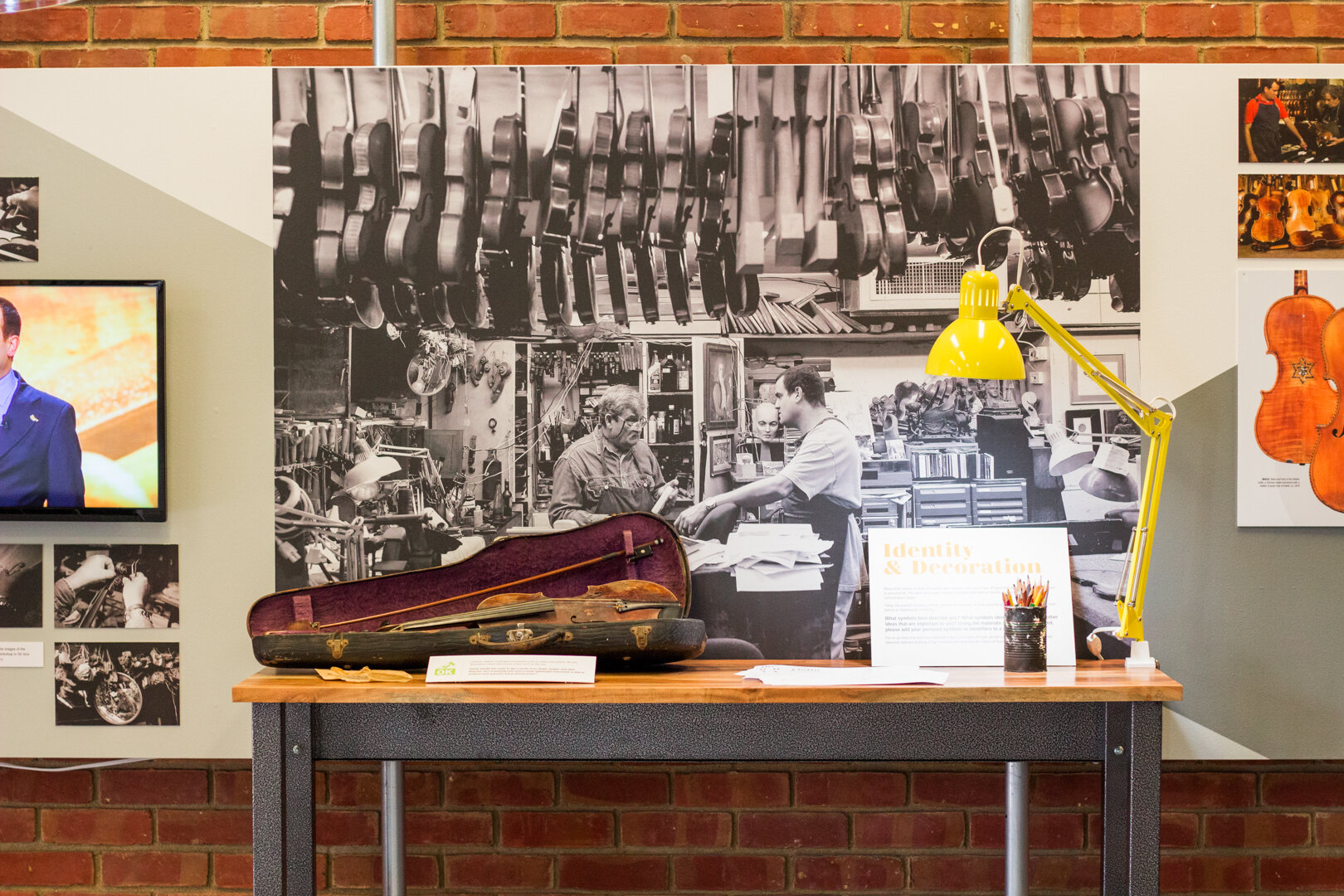In the Artist’s Studio: Violins of Hope is guest curated by former NUMU Executive Director, Lisa Coscino.
The Workshop of Amnon and Avshalom Weinstein and the Violins of Hope
This unique exhibition developed in partnership with Music at Kohl Mansion Burlingame, producers of the Violins of Hope San Francisco Bay Area Project, presents a virtual experience of the Tel Aviv violin workshop of Amnon and Avshalom Weinstein where the Violins of Hope are restored. The installation will share the story of the Weinstein family and the inspiration behind the Project, and highlight one of the 70 historic instruments in the collection. The Violins of Hope is a rare assemblage of string instruments played by European Jews before, during, and after the Holocaust. Fully restored by father and son Israeli luthiers, Amnon and Avshalom Weinstein, these priceless historic instruments are touring the world, bringing together people of all faiths, nationalities and beliefs, in remembrance, musical celebration, and community discourse around issues of peace, justice, human dignity, and common understanding. Below are images from the exhibition and of the Weinstein’s Tel Aviv workshop as well as writing from guest curator and former NUMU Executive Director, Lisa Coscino.
Introduction to the Workshop
In the 1980s, Amnon Weinstein, a second-generation violin maker in Tel Aviv, Israel, was asked to restore an old violin. The instrument was in poor condition but had an incredible past: the man who brought him the violin had been interned in a concentration camp, and he played it as he was sent to the gas chamber. This man survived only because his captors assigned him to the camp’s orchestra. After the liberation of the concentration camp, the man put the violin away. He had not played it since.
“I opened the violin case,” Weinstein recalls, “and inside there were ashes.”
He was horrified, as the ashes were very likely the incinerated remains of concentration camp victims. Almost 400 members of his own extended family had died in the Holocaust. To handle an instrument that had witnessed such destruction was too much for Weinstein.
“I could not,” he says. “I could not.”
In 1999, Weinstein decided he was ready. He put out a call for other violins which had survived the Holocaust like the one he’d put away so many years ago, and so began the Violins of Hope. Since then, Amnon and his son Avshalom have received more than 70 instruments, and have devoted countless hours to the lovingly detailed and careful restoration of each one. This exhibition will share the story of Amnon and Avshalom Weinstein and the violin workshop in Tel Aviv where the Violins of Hope journey began.
The Holocaust is but one of the many brutal tragedies that humankind has witnessed during the past century. Embedded in the story of the violin workshop, this exhibit offers the opportunity to consider the past and the role we play in shaping the future, and how music can inspire and elevate individuals and communities to resist, speak truth to power and survive.
This exhibition was part of the Violins of Hope San Francisco Bay Area project, produced by Music at Kohl Mansion in Burlingame, featuring restored violins from the Violins of Hope collection in concerts, programs and exhibitions throughout the Bay Area.
About the Artists
Amnon Weinstein
Founder of Violins of Hope, Israeli master violin maker Amnon Weinstein is involved in initiating and promoting concerts and educational projects around the world. A viola and trumpet player himself, he first learned his violin-making craft in childhood with his father. He studied for three years in Cremona, Italy - regarded as the birthplace of the violin - with Pietro Sgarabotto, Guiseppe Ornati and Ferdinando Garimberti. He also studied in Paris with Étienne Vatelot.
Born in Palestine, in 1938, to a violinist and a pianist from Vilna, Lithuania, Amnon lives and works in Tel Aviv where his violin workshop is located. “I seek out the remaining sliver of culture—dusty violins in thousands of pieces,” he says. “I renew their lives as I repair and renovate them, piecing them together and cleaning them so that they may play their lively tunes once again.” The spirit of those who were silenced live on through his loving restorations.
Avshalom Weinstein
A third-generation Israeli violin maker, Avshalom Weinstein was trained by his father, Amnon, and began working in their Tel Aviv workshop in 1998 as a violin-maker and restorer of violins, violas, and cellos. He is trained in the tradition of the Italian Cremonese School of violin-makers and the French school of restoration.
Avshalom has joined his father at the Keshet Eilon Violin and Bow-making Atelier at Keshet Eilon Master Class for young violinists each summer since 1998. Avshalom has also been training with Master Bow-maker Daniel Schmidt from Dresden, Germany, in bow repairs since 2009. He opened his own workshop in Istanbul, Turkey in 2009.
Image © Felix Rettberg
About the Violins of Hope
Violins of Hope is a private collection of violins, violas and cellos. Collected and restored by Amnon Weinstein, these instruments once belonged to musicians from Jewish communities in Eastern Europe before WWII. Many were donated by or bought from Holocaust survivors. Some arrived through family members. Some simply carry Stars of David as a decoration and indication that they were played by proud klezmorim - Jewish folk musicians whose tradition dates back to the middle ages.
The Nazis used music, especially violin music, to humiliate and degrade Jews in ghettos and concentration camps. As they and their allies conquered most of Europe, Nazi Germany confiscated Jewish property, art, jewelry and thousands of instruments from all over the continent. These violins represent the triumph of the human spirit over evil and hatred. Now, more than 75 years after the Holocaust, the Violins of Hope are played around the world, speaking for those who were silenced, their voices returning with every performance.
Didactic Panels
click arrows to advance, click on image to view larger

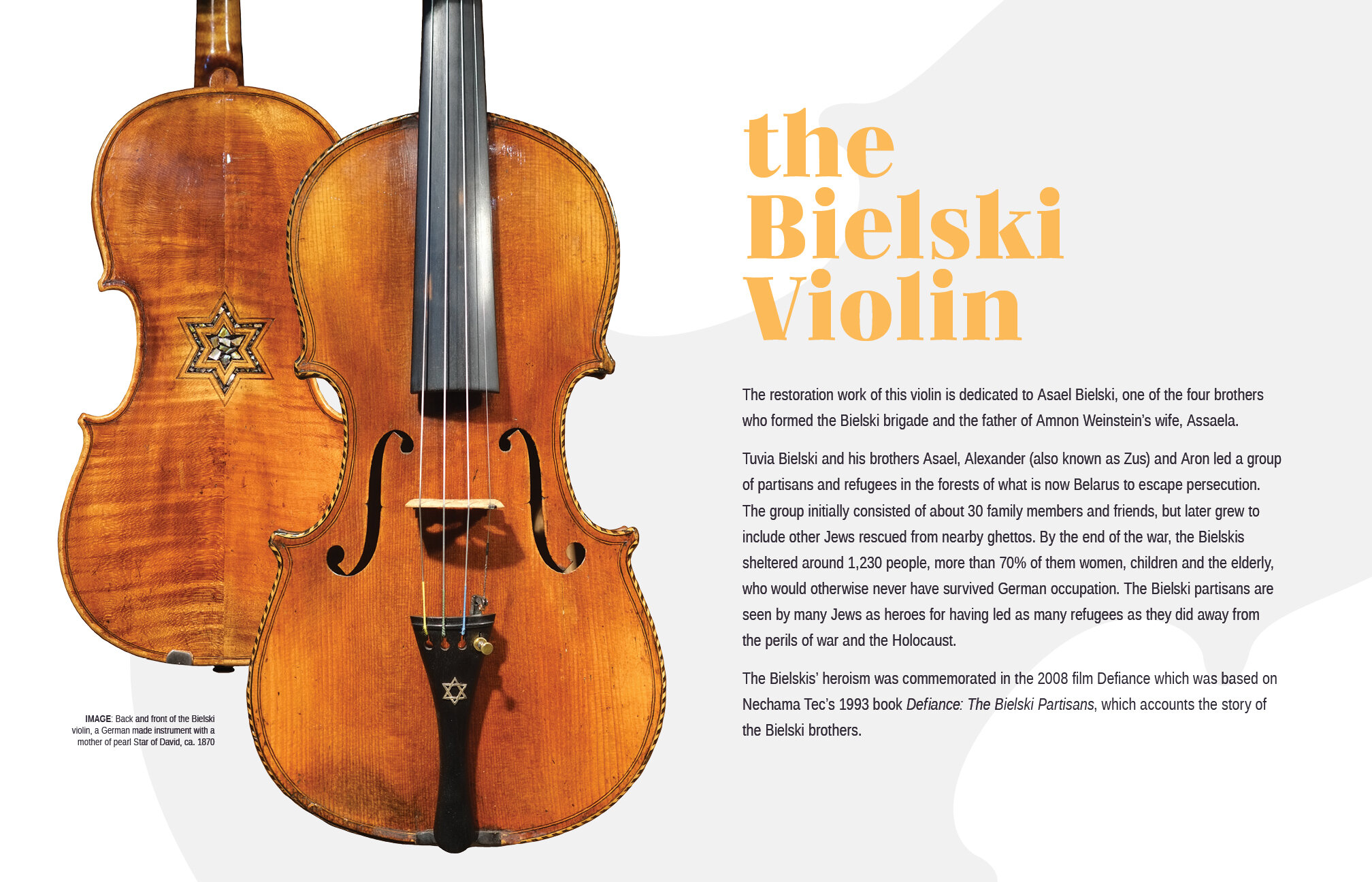

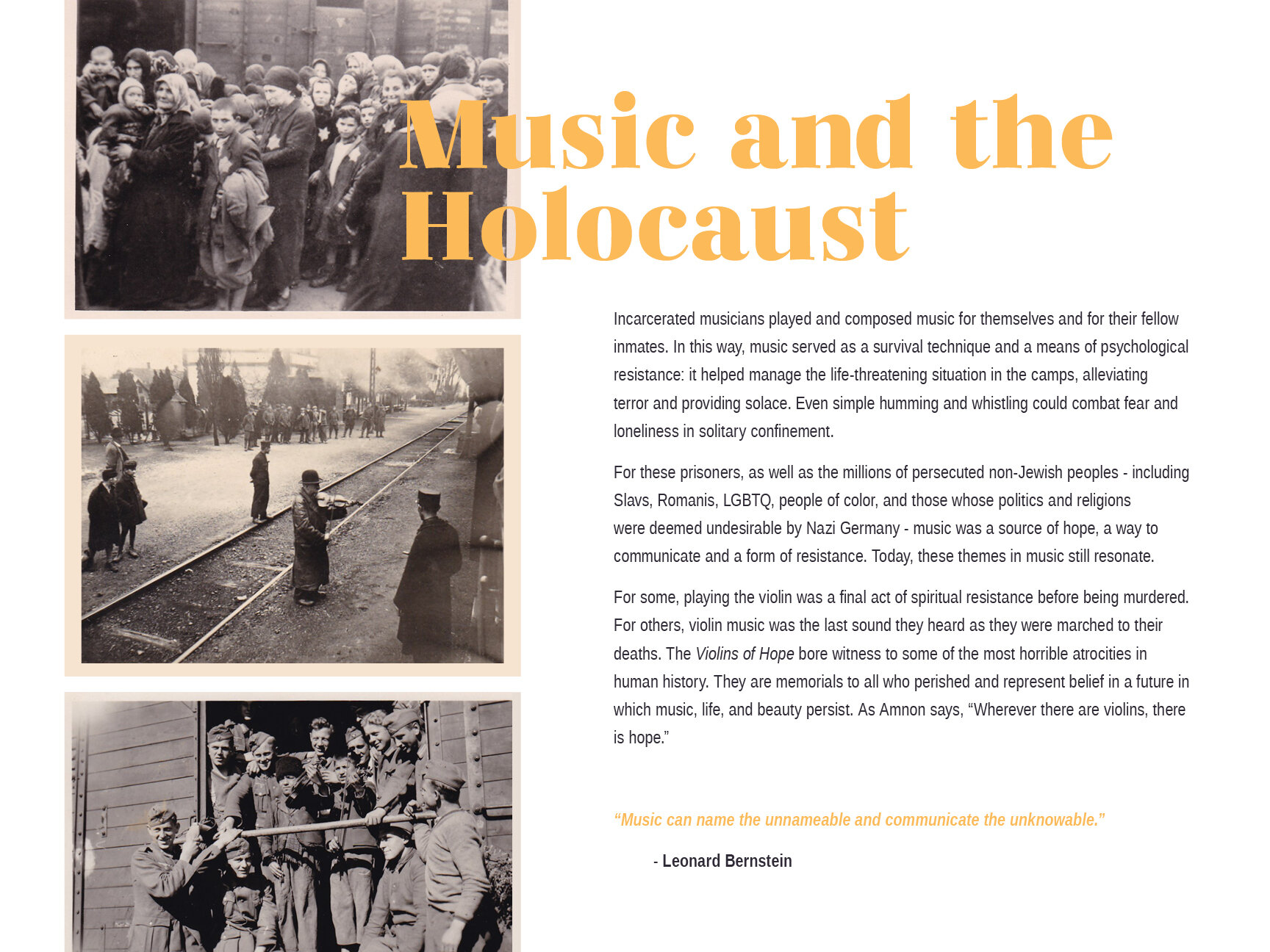
Anatomy of the Violin and Bow
The first violins were created in the early 16th century in Italy, as evidenced in paintings by Italian Renaissance painter Gaudenzio Ferrari. These paintings depict musical instruments that have visual similarities to the modern day violin such as curved front and back plates, 3 strings that feed into peg boxes with side pegs, and f-holes. Click the link to view a close up of the various parts and functions of a modern day violin.
Identity and Decoration
Many of the Violins of Hope are marked with symbols, such as the Star of David, that represent their owner’s culture or personal life. The Nazis also used a variety of symbols and colors to identify Jews and others incarcerated in concentration camps.
Today, the practice of using symbols, religious or otherwise, to show personal importance is seen in everything from tattoos to skateboards to clothing.
What symbols best describe you? What symbols identify your beliefs or other ideas that are important to you? Download and print the interactive sheet from the link below and add your personal symbols or identifiers to the violin.
Violins of Hope Performance at NUMU
This program is presented in collaboration with Violins of Hope San Francisco Bay Area presented in association with Music at Kohl Mansion, Burlingame, CA. Learn more at ViolinsofHopeSFBA.org
In The Artist’s Studio featuring The Workshop of Amnon and Avshalom Weinstein and The Violins of Hope is made possible by the generous support of The Borgenicht Foundation. The Borgenicht Foundation works to promote the understanding of secularism as the way and hope for establishing peace in the world. In addition, the Foundation supports social justice, conservation and historic preservation, the arts, health, and education.


